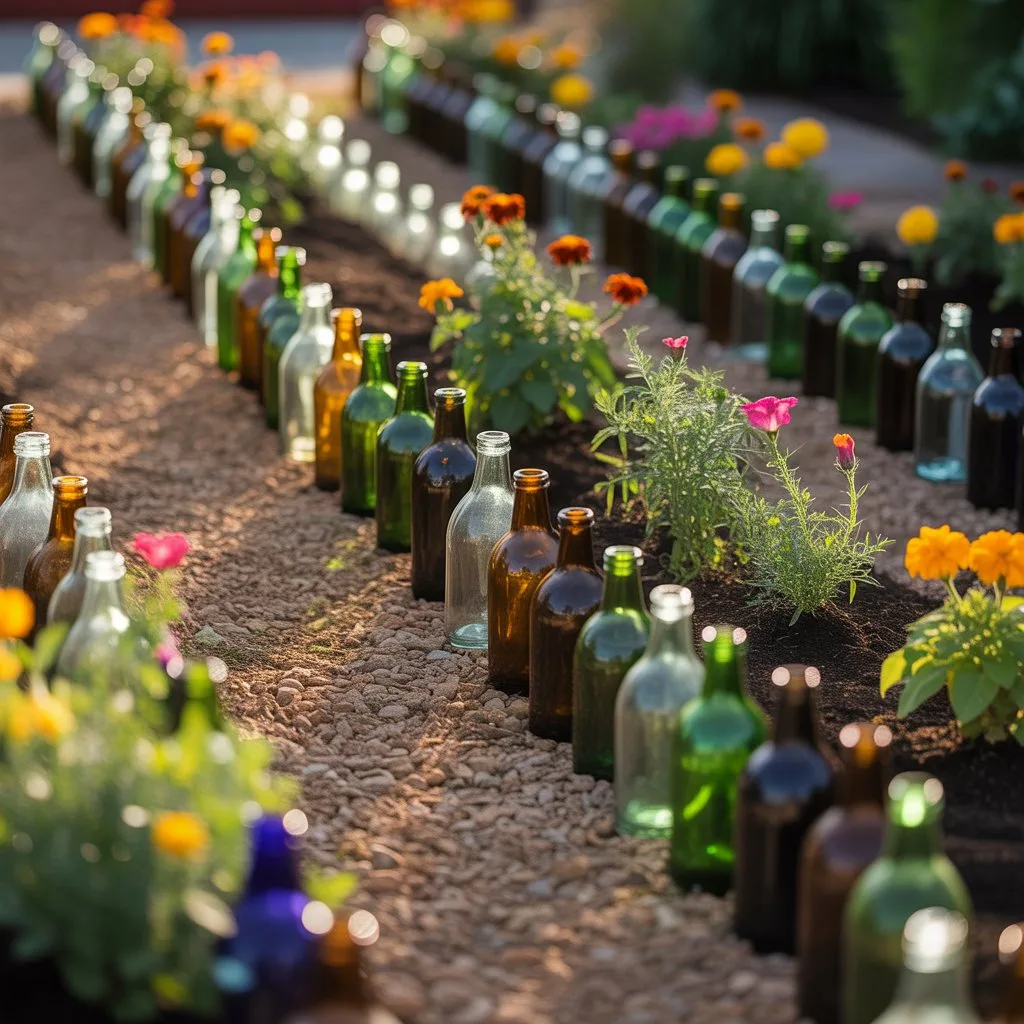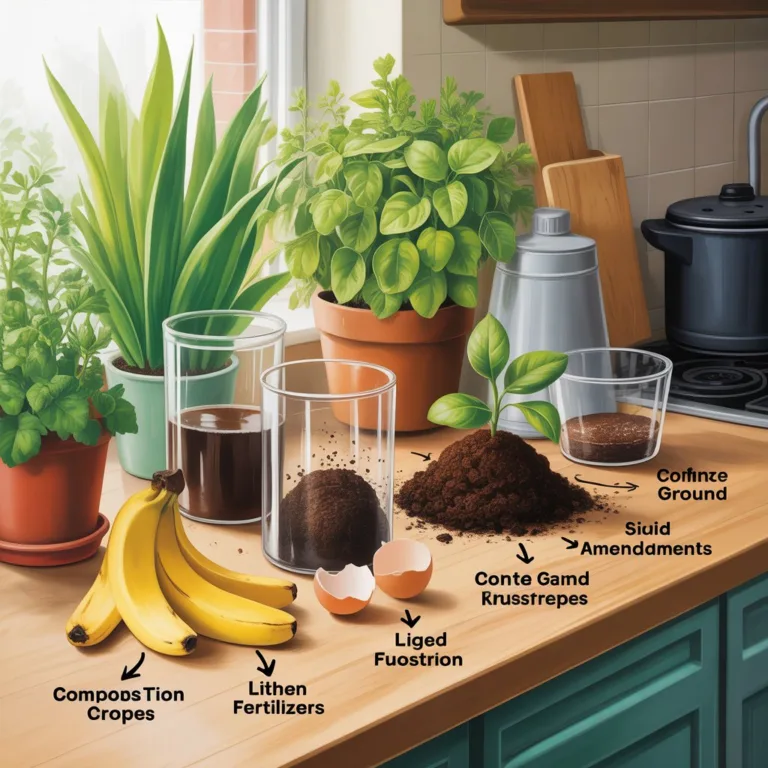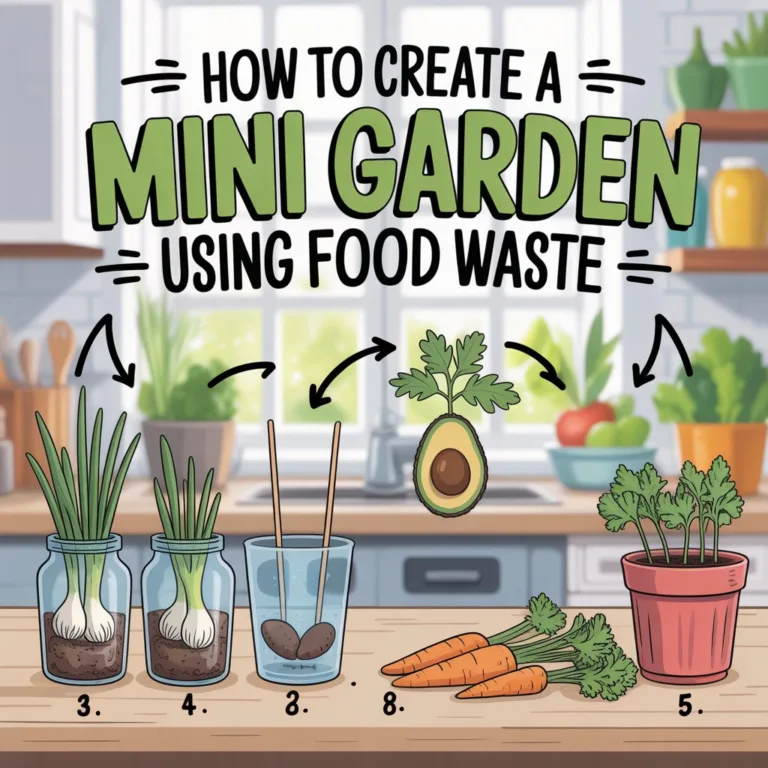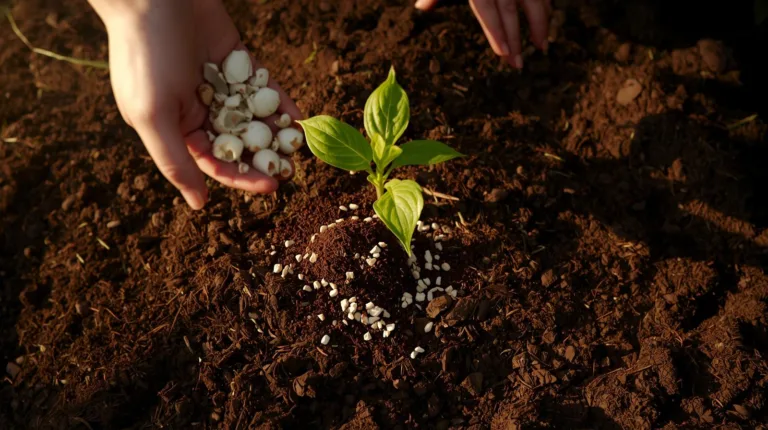Repurposing glass bottles into decorative plant borders is an innovative way to combine sustainability, creativity, and functionality in your garden. Beyond their practical purpose, these borders create visual interest, provide structure, and reflect a conscious approach to reducing waste. Whether for flower beds, vegetable patches, small urban balconies, or community gardens, glass bottle borders are a versatile and eco-friendly solution that can transform any space into a greener, more organized environment.

The Environmental Impact of Reusing Glass Bottles
Every year, millions of glass bottles are discarded globally, many of which end up in landfills, contributing to environmental pollution. Glass is non-biodegradable, meaning it remains in ecosystems for centuries. By reusing glass bottles, gardeners can reduce this waste, extending the life of these materials while adding a creative touch to their green spaces.
Reusing materials also saves energy. Producing new glass from raw materials requires significant energy for mining, melting, and shaping. Using discarded bottles avoids these energy costs entirely, making it a small but meaningful step toward environmental conservation. Moreover, using recycled bottles demonstrates a practical approach to sustainability, inspiring neighbors, schools, and communities to rethink waste.
Selecting the Right Glass Bottles
Not all glass bottles are created equal. Choosing the right bottle type affects both aesthetics and functionality:
- Size and shape: Taller bottles work well for edging taller plants, while shorter bottles are ideal for low-growing flowers and herbs.
- Color: Green and brown bottles blend naturally with garden colors, while clear bottles offer a minimalist, modern look. Colored bottles can create playful patterns, adding vibrancy to a garden bed.
- Durability: Thicker glass withstands weathering and accidental knocks better than thin bottles. Avoid bottles with major cracks, as these may break easily.
Glass bottles can be sourced from your household, second-hand stores, or community recycling programs. Using bottles from a variety of sources adds character and a story to your garden, transforming discarded items into a functional piece of art.
Preparing Bottles for Garden Use
Preparation is key to ensure both safety and longevity. Dirty or sticky bottles can be hazardous and visually unappealing.
- Cleaning: Soak bottles in warm, soapy water for several hours. Scrub labels, glue, or residue with a sponge or brush. For stubborn labels, a mixture of baking soda and vegetable oil helps loosen adhesive.
- Sanding: If a bottle has sharp edges or chips, gently sand the affected area to prevent injuries. Always wear gloves and goggles during this process.
- Sterilization (optional): For edible gardens, rinse bottles with a mild bleach solution or boiling water to eliminate bacteria.
By thoroughly preparing bottles, you create safe and durable garden borders suitable for all types of plants.
Planning Your Border Layout
Before placing bottles, plan the layout carefully. Proper planning ensures stability, aesthetic appeal, and functionality.
- Straight borders: Perfect for vegetable patches or formal garden areas. They provide a clean, structured look.
- Curved borders: Ideal for flower beds or paths, giving the garden a soft, flowing shape. Curves create natural lines that guide the eye.
- Patterned borders: Mix different colors, sizes, or shapes of bottles to form geometric or playful patterns. Repeating sequences of colors can provide rhythm and structure to your design.
Consider accessibility as well. Borders should protect plants without obstructing pathways or making maintenance difficult. Mark the intended lines using chalk, string, or small stakes before placing bottles in soil.
Installing Bottles Securely
Stability is critical to prevent tipping or breaking:
- Burying bottles: Place bottles neck-down into the soil, typically about one-third of their length, depending on height and soil firmness.
- Firm packing: Press soil tightly around the base of each bottle. This ensures they remain upright through wind, rain, or accidental bumps.
- Spacing: Place bottles close enough to form a continuous border while leaving a small gap for plant growth. Adjust spacing based on the type of plants and desired visual effect.
For added security, you can add gravel or small stones around the base. This not only stabilizes the bottles but also enhances drainage and prevents soil erosion.
Creative Variations for Garden Borders
Glass bottles can do more than form simple edges. Explore these creative variations:
- Mini herb enclosures: Create small sections specifically for herbs or delicate plants. Bottles act as microbarriers, protecting young seedlings.
- Fairy gardens: Combine colorful bottles with moss, miniature figurines, and pebbles to design whimsical miniature landscapes.
- Lighting effects: Insert solar-powered LED lights into clear bottles. At dusk, the bottles glow softly, turning your garden into an enchanting evening space.
- Recycled planters: Cut bottles horizontally to use the bottom halves as small planters for succulents or seedlings.
Combining bottles with other natural materials, such as bamboo, wood, or rocks, can enhance texture and interest. For instance, placing a row of small stones in front of bottles can create a layered, visually appealing effect.
Choosing Plants for Bordered Spaces
The plants you select should complement the design of your glass bottle border. Consider these options:
- Low-growing flowers: Marigolds, pansies, or petunias look charming behind clear or colored bottles.
- Edible plants: Herbs like basil, thyme, or rosemary thrive within small, protected sections.
- Climbers: Vining plants such as sweet peas or morning glories can weave around taller bottles for a vertical element.
- Succulents: Their low water requirements make them ideal for bottle borders in sunny, dry areas.
Selecting plants of varying heights, colors, and textures adds depth and dimension to your garden. Group plants with similar light and water requirements to simplify care.
Maintenance Tips
Glass bottle borders are low-maintenance but require occasional care:
- Cleaning: Rinse bottles periodically to remove dirt, algae, or moss buildup.
- Inspecting for damage: Replace or repair any cracked or broken bottles to prevent injury.
- Soil adjustments: Over time, soil may settle. Repack soil around the base of bottles as needed.
- Winter care: In freezing climates, consider removing bottles or insulating the bases to prevent cracking.
Proper maintenance ensures your borders remain attractive, functional, and safe year-round.
Benefits Beyond Decoration
Creating glass bottle borders offers more than visual appeal:
- Promotes sustainability: Reusing bottles reduces landfill waste and energy consumption.
- Supports plant health: Borders help define planting areas, preventing accidental trampling and improving organization.
- Encourages creativity: Custom designs allow gardeners to experiment with color, pattern, and layout.
- Educational value: Projects like this teach children and communities about recycling, DIY skills, and plant care.
- Mental well-being: Gardening and hands-on projects reduce stress, enhance focus, and provide a sense of accomplishment.
Even a small border project can demonstrate a meaningful approach to sustainable living.
Expanding the Idea
Once comfortable with basic glass bottle borders, explore further innovations:
- Multi-layered borders: Use bottles of different heights to create terraces for plants of varying sizes.
- Integrated irrigation: Position bottles to channel rainwater toward plant roots, improving water efficiency.
- Community projects: Organize neighborhood workshops where participants bring bottles and contribute to a communal garden border.
These expansions make bottle borders a dynamic, interactive, and multifunctional garden element.
Combining Art and Function
Glass bottle borders are not just practical; they are an opportunity to blend gardening with artistry. Consider painting bottles with eco-friendly paints, etching designs with a Dremel tool, or arranging bottles in creative geometric patterns.
By merging form and function, your garden borders become a statement piece that showcases personal creativity while enhancing the landscape. Over time, moss, vines, and flowers will further integrate the bottles into a harmonious natural environment.
Sustainability and Community Impact
Every reused bottle sends a message about conscious living. Using these materials locally supports the circular economy, inspires sustainable habits, and encourages others to find creative solutions to waste. Schools, urban gardens, and community initiatives can adopt bottle borders as hands-on teaching tools, demonstrating both environmental stewardship and design thinking.
This practice also fosters a sense of pride and accomplishment, showing that small, intentional actions can have a meaningful impact on both local and global scales.
Final Thoughts
Glass bottle borders transform ordinary plants into organized, beautiful, and eco-conscious displays. With creativity, planning, and care, even the simplest bottle can become a striking element in a garden. The combination of aesthetic appeal, sustainability, and hands-on crafting makes this project perfect for gardeners of all ages and skill levels.
Reusing glass bottles provides endless opportunities to experiment with design, plant selection, and decorative effects. As these borders evolve over time, they reflect not only your gardening skills but also your commitment to sustainable, mindful living. By embracing this DIY approach, you turn discarded materials into enduring beauty, contributing to greener, more inspiring outdoor spaces.

Sofia Greenfield is a sustainable gardening expert and environmental educator who inspires families and urban gardeners to cultivate green spaces responsibly. She shares practical tips on growing vegetables, herbs, and flowers using eco-friendly and recycled materials, emphasizing the joy of gardening while protecting the planet.



